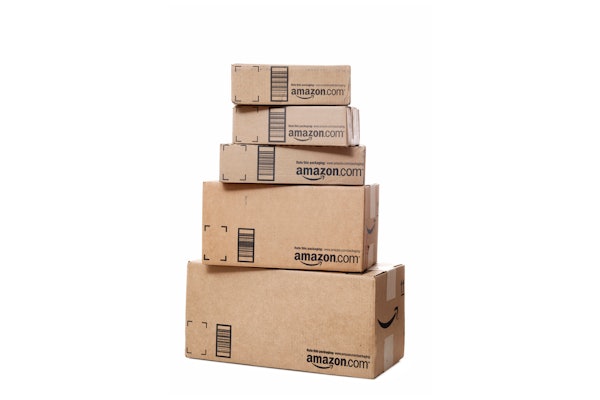Sh*t happens. An inelegant opening, yes, but one that conveys the business reality that plans can (and often do) go awry. The disruptions can range from the merely inconvenient to a full-blown crisis, hence the need for contingency planning──having the so-called “Plan B.” Contingency planning proactively asks, “What if…” to avoid having to reactively ask, “What now?”
Packaging is a natural for contingency planning, given its increasing recognition as a strategic tool and a source of competitive advantage. Consumer packaged goods are the quintessential examples; however, the need to apply contingency planning to packaging holds for all other product categories in which packaging affects corporate success.
In the main, contingency planning does not receive its due: completely absent in some firms and poorly practiced in others. But why, given the intrinsic value of back-up options? The answer has a lot to do with corporate culture and corporate mindset. In the typical corporate setting, the bulk of time and resources are expended on day-to-day, short-term operations. That’s understandable. But caution: faith in “Plan A” can be so strong that the need to plan along the alphabet is under-valued. Another caution: contingency planning is not limited to the worse-case-scenario, which intrinsically carries a low probability of occurrence; rather, there are a host of other types of occurrences that can exert sizable, negative impact.
Contingency planning is not a stand-alone undertaking; to the contrary, it should be a component of strategic planning, risk management, project management, and any other type of planning that relies on forecasting. Another way of stating it is that contingency planning is interdisciplinary, a characteristic shared with packaging.
Contingency planning presents an opportunity for a packaging department to increase its profile within the corporation, regardless of the corporation’s present commitment to contingency planning. If corporate commitment already is strong, packaging’s opportunity resides in being a strong contributor. If corporate commitment is less than strong (including nonexistent), packaging’s opportunity resides in being a convincing advocate.
Either role requires a fundamental understanding of contingency planning. The specifics can vary across industries and the corporations therein; nonetheless, there are shared elements on which to base the following framework discussion.
But first a brief digression, to go from the hypothetical to concrete examples of the packaging-contingency planning link. One can proceed along the value chain, starting with procurement: What if a major supplier has to be removed from the list of approved? As for plant operations: What if packaging-line operations go down for a protracted period, necessitating reassignment or outsourcing of production? Regarding regulation: What if anticipated FDA approval (or that from another agency) isn’t granted, or a current approval is withdrawn? Also regarding regulation: What if an approved component nonetheless comes under bad publicity, as with Bisphenol A (BPA)? The foregoing examples should suffice for the many others that could be offered.
Identify what’s of critical importance. Planning is a path, consisting of interconnected steps, having varying criticality, and, therefore, varying potential to disrupt. It’s vital to know── were matters to go wrong──which steps would bring proceedings to a halt, versus which steps could be worked around.
Perform a risk analysis. More than just an acknowledgment that matters might go wrong, there needs to be an assessment of the degree of exposure across the planning horizon. It’s impossible to plan for every possible contingency, hence the necessity for reasonable limits as to what is to be considered. Making that determination requires a thorough understanding of the subject discipline (in this case, packaging) and how it performs within the corporate hierarchy.
Prioritize. The time and resources assigned contingencies should reflect their rankings, which, in turn, should be based on two factors: impact and probability. It’s an easy assignment when a contingency would have a big impact and has a high probability of occurrence; the same can be said when a contingency would have a modest impact and has a low probability of occurrence. Most contingencies fall somewhere between those two opposites, thereby placing a premium on assigning the proper weights to each factor.
Write the contingency plan. Without exception, a contingency plan should be a written document, preferably in digital and hard-copy formats. From the outset, it should be clear when being read that the objective of the plan is to assure that corporate operations continue in the face of conditions that otherwise would prove disruptive. And more to readership (and implementation), a dissuasively long, overly-complex plan is of compromised value.
Include the essentials. The plan should detail: what is to be done; how it is to be done; by whom; when; where; and, what constitutes a successful conclusion. Despite such specificity, a plan can be deficient if it only applies in the wake of untoward events. In other words, the plan also should identify indicators that untoward events might be on the approach, thereby triggering an all-the-more-proactive response.
Keep the plan updated. If the business universe were static and completely predictable, contingency planning would be a needless exercise; or, alternatively, any given contingency plan would remain relevant indefinitely. With neither of those two scenarios being realistic, reality mandates that contingency plans be updated periodically, in reflection of changing circumstances. Updates, in turn, require effective in-house communications, less there be personnel who are left uninformed.
As long as plans (of any type) are based on beliefs and assumptions about the future, planners could make good use of a real, functioning crystal ball. While awaiting its arrival, planners will do well to incorporate contingency planning at all levels. Not to do so would be tantamount to relying on wishes, perhaps awaiting an equally-mythical device: a genie’s lamp.
Sterling Anthony, CPP, is a consultant specializing in packaging, marketing, logistics, and human-factors. His contact information: 100 Renaissance Center, Box-176, Detroit, MI 48243; telephone 313-531-1875; [email protected]; www.pkgconsultant.com























